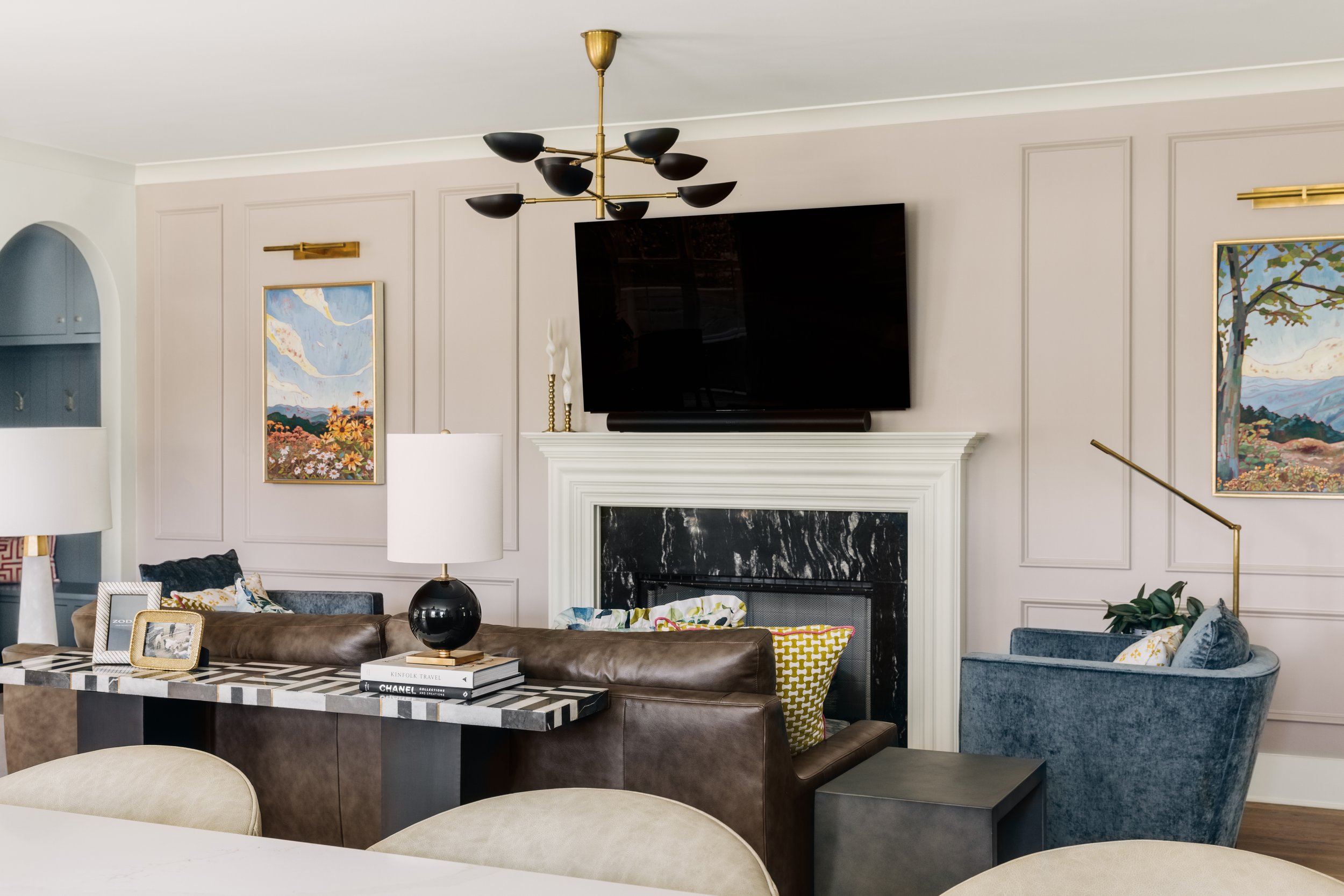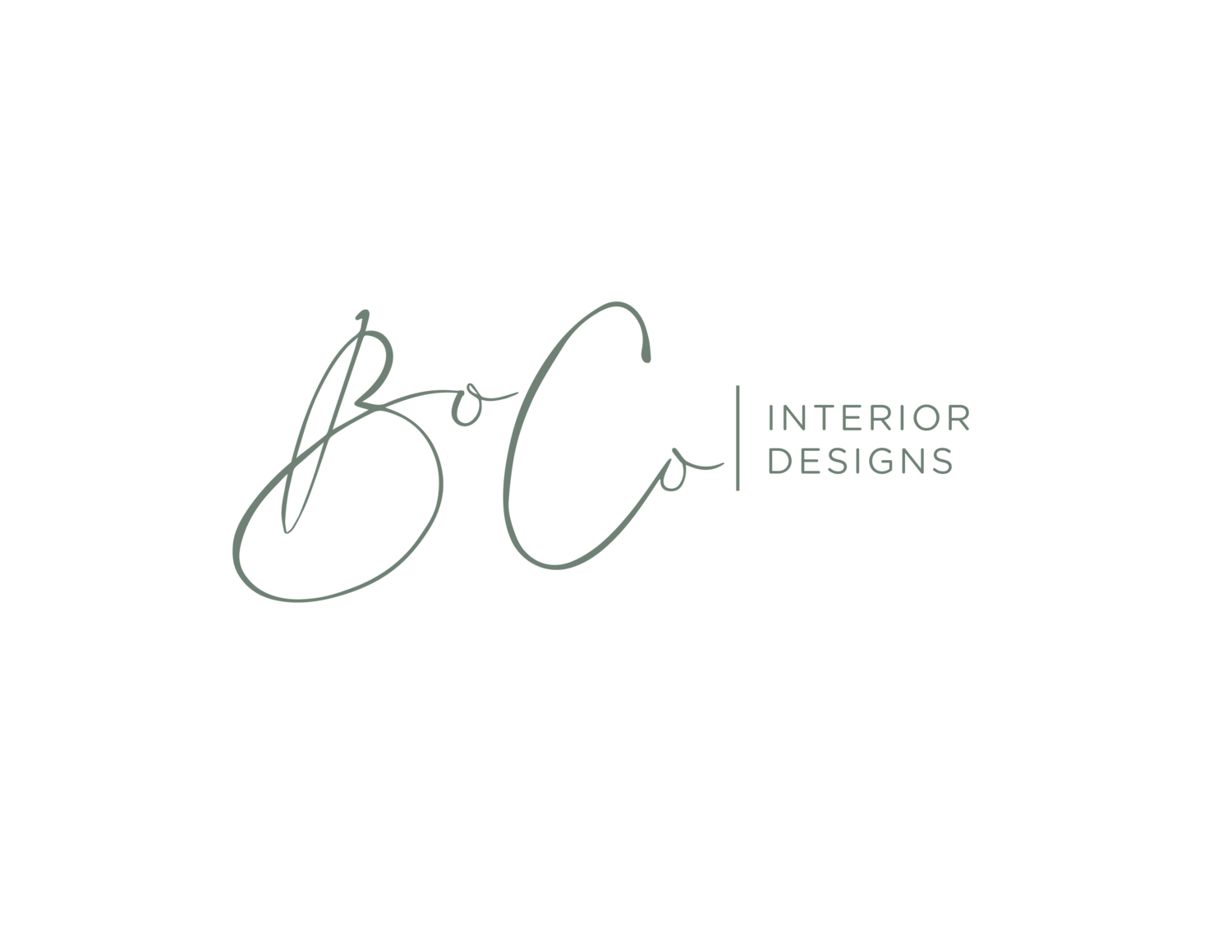
Understanding Harmony in Interior Design
Harmony in interior design creates likeness, fit, and repetition amidst the décor, furniture, and fixtures in your rooms. BoCo Interior Designs shows you how to arrange the pieces of a room to fit together through color, style, texture, and theme. The result is an interior atmosphere of balance, comfort, and leisure. Clear the clutter, enjoy the calm, and learn to create harmony in the spaces you love.
In the Upstate and need interior design help? Call or text BoCo Interior Designs at (864) 556-3922, or email Jenny & Grace at bocointeriordesigns@gmail.com. Or click “Get Started” for a complimentary estimate.
What is Harmony in Interior Design?
Harmony is the way the furnishings in a room fit together to create visual calm. Designers mix and match furniture, decor, and room elements with different textures, shapes, and colors that curate a natural sense of belonging. When the elements work together the result is a functional flow that makes the atmosphere inviting. Harmony is an invisible connective tissue between the aesthetic beauty and functional use of any space. Harmony is one of the core concepts of interior design and results in a unified interior.
Using Color
Color is the foundational component of harmonious interiors. Color harmony creates visual balance within a space through the complimentary combination, placement, and framing of tints, tones, and shades. An aesthetically pleasing palette will result in a natural equilibrium that feels welcoming. Unless your goal is a monochromatic room, it is important not to overwhelm any space with one color—or too many shades of the same color. The 60-30-10 rule guides interior designers' color choices (consciously or subliminally), in that 60% of a space is often devoted to a primary color, usually the color of the walls. The secondary color then takes up 30% of the space and complements the primary color by providing contrast. Finally, 10% of the space becomes an accent color that can draw the eye, create visual interest, and stand out. Of course, the goal of a color rule isn’t to design a room by percentages but to give designers a framework for color harmony.
Using Texture
A room has harmonic texture when the visceral appearance and physical feeling of an interior space are welcoming to the touch. The tactile blend of smooth, coarse, fluffy, bristly, and glossy materials creates an environment of interesting contrast. Textures stem from furniture, fabrics, flooring, ceilings, wall treatments, decor items, and fixtures, and provoke depth and dimension to a space. The interplay of light with textures helps define how large or small a space feels. Strategically place furnishings with reflective textures where you want to create more light, and darker, heavier textures where you want to absorb more light. Also, avoid using just one type of finish or organic material, opting to diversify textures for vases, containers, and frameworks for plants, flowers, and art. Harmony results when you curate a variety of textures that intrigue the senses without feeling out-of-place.
Using Form
The variety and combination of shapes within a room make up its’ form. Interiors have the perception of harmony when there is an intentional balance of shapes. There are three kinds of forms in any environment: geometric, organic, and abstract. While geometric forms use squares, circles and triangles to create structure, order, and function, organic forms use curved lines found in nature to create improvisation, liveliness, and beauty. Combined with abstract forms that infuse creativity through artistic accents, interior designers use the three different forms to complement, contrast, and create visual harmony. Form also directly impacts the intended use for any space. For example, angular furniture with sharp edges evokes a formal setting, while rounded seating with softer surfaces invites comfort and community.
How to Incorporate Harmony in Your Interiors
Here are some simple ways to incorporate harmony into your home:
1. Start with a color palette
Having a blended color palette is the best way to play with harmony. Use various shades and tones to your core palette. Don’t veer too far away from each other as that won’t really lean into the sameness that you’re looking for. Remember the 60-30-10 rule.
2. Lean into textures
Textures are your best place to have fun. Lean into steel, stone, wood, and all the elements that you can think of. White washing walls is a unique way to start with a neutral color palette, while also playing with texture. Want to try something bold? Lime washing is another trend that gives you an immediate technique for establishing unmatched textures.
3. Play with form
Striking the right balance of geometric, organic, and abstract forms is important to harmonizing any room. Start by considering the function of the room: formal vs comfortable vs creative. Then, curate a mix of furnishings that are weighted by the primary form, and introduce secondary forms for variety and energy.
4. Add the unexpected
One unexpected piece is always fun. A unique light fixture, an accented wall or chair, an oversized plant, or a remarkable piece of artwork can excite any room. For example, if you have a higher contrast room (like an all-white room), a unique black light fixture or brass light fixture will make the room pop while not breaking the harmony that you’re seeking to achieve.
5. Step back and survey
Harmony isn’t always easy to define but you’ll know it on a first-glance. Take a step back and survey the room. What’s the first impression someone might have when they step into the room? If it’s not feeling as harmonious as it could be, play with your elements, and make some changes.
Interior Design in the Upstate
“Jenny & Grace with BoCo Interiors did a fabulous job with my renovation. I live four hours away, so I really needed a company that I could trust to handle all aspects of overseeing construction & design in my absence. From start to finish, they were professional and so very helpful. They worked with the contractor and subs to ensure all was correct (lighting, plumbing, etc) in the construction process. The design boards BoCo Interior Designs utilizes made it very easy for me to make decisions remotely from Jenny & Grace’s selections. I highly recommend BoCo for interior design!!”
— The Upstate, SC | BoCo Interior Designs Reviews
Begin Your Design Process
Tell us about your project.














